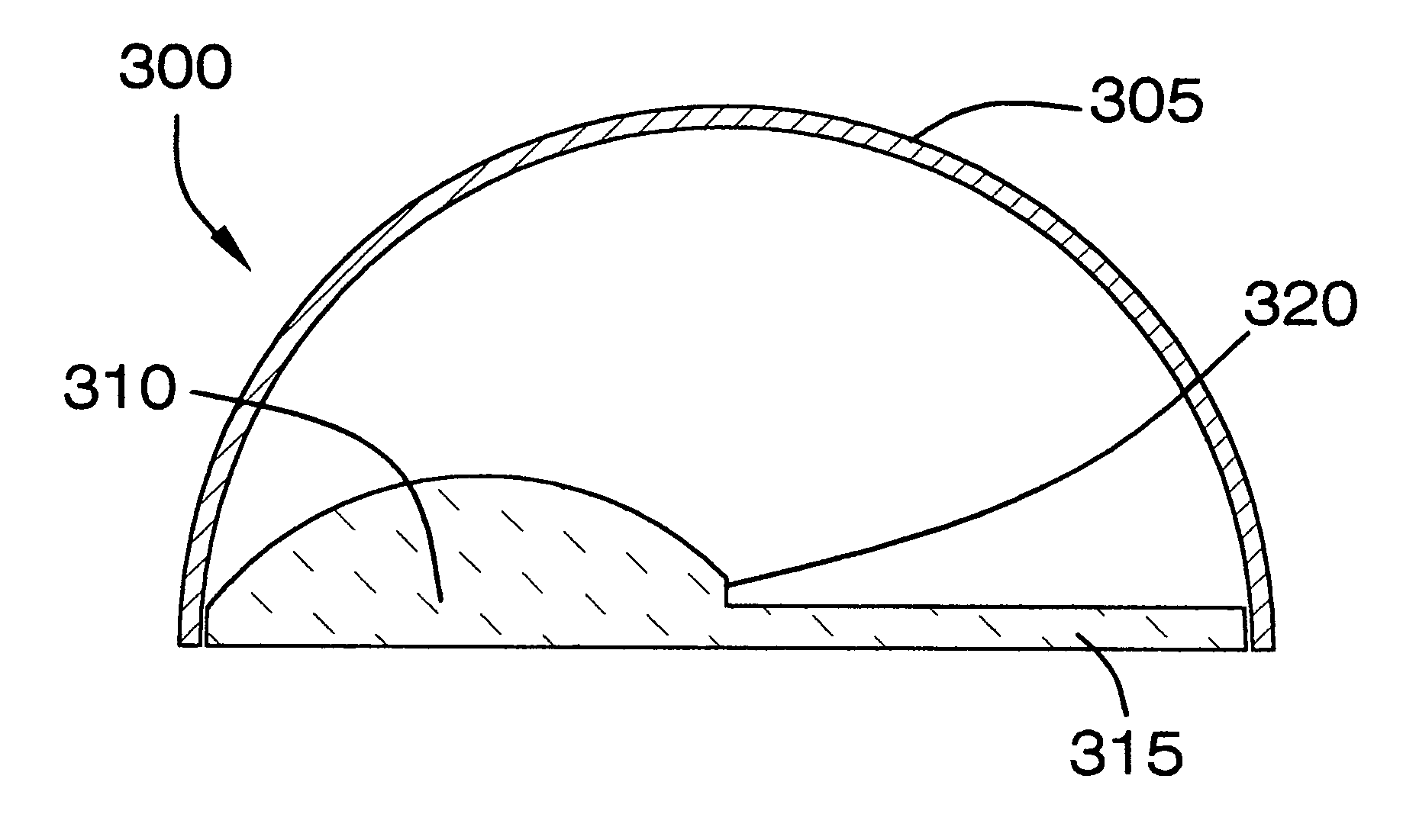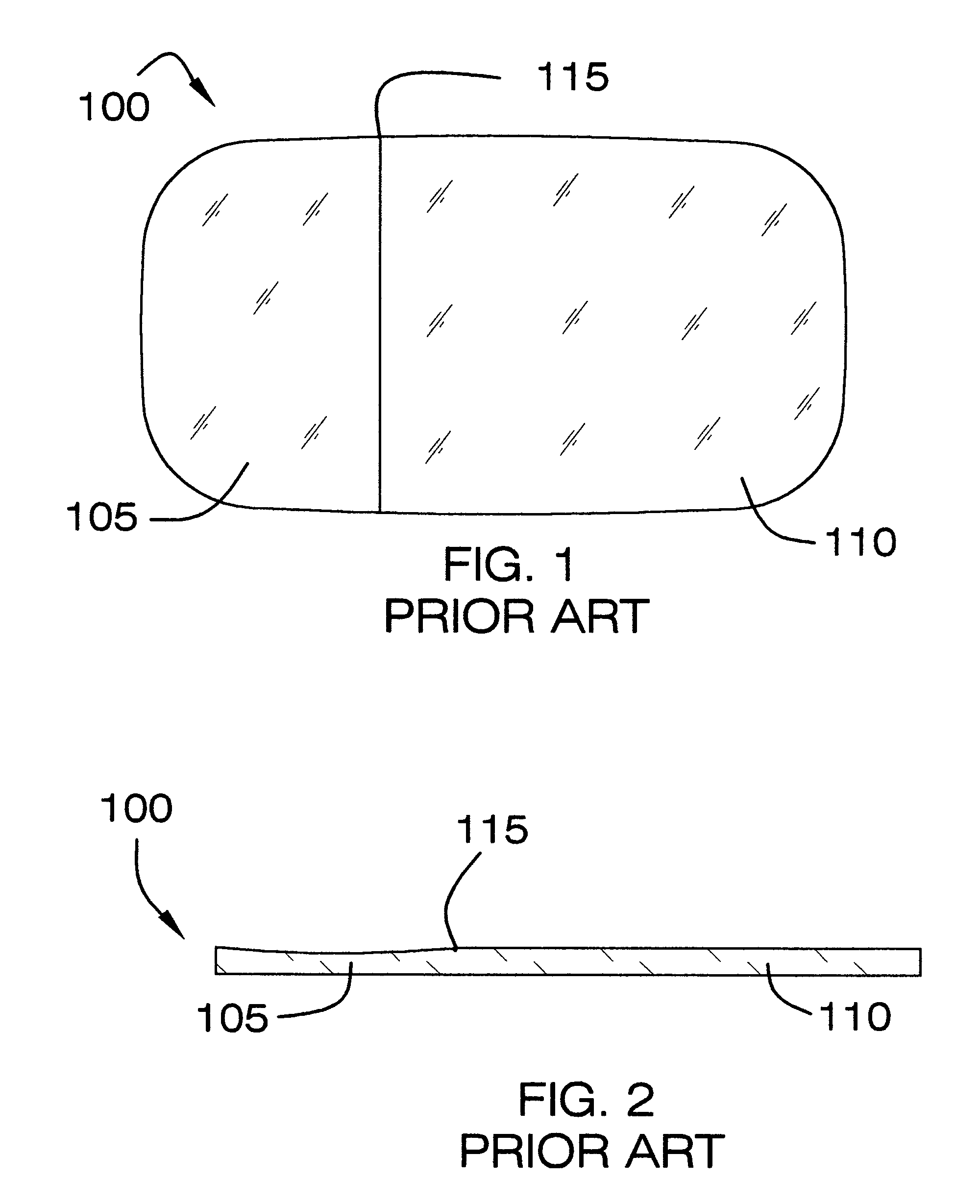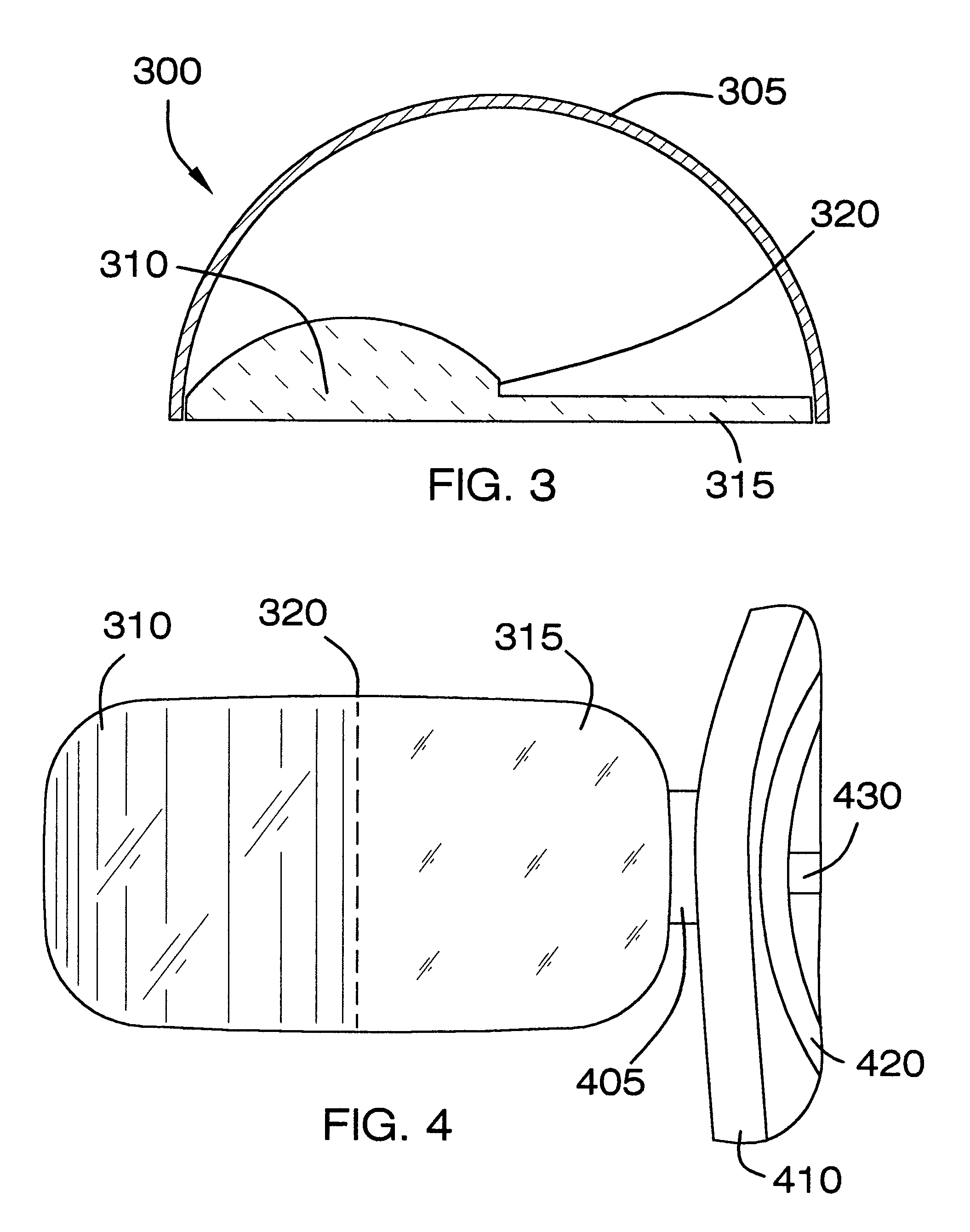Blind spot free mirror
a technology of blind spot and mirror, applied in mirrors, instruments, vehicle components, etc., can solve the problems of inability to properly see one another, traditional plane mirrors fail to capture the entire lane-next to the driver, etc., and achieve the effect of eliminating the blind spot that is inheren
- Summary
- Abstract
- Description
- Claims
- Application Information
AI Technical Summary
Benefits of technology
Problems solved by technology
Method used
Image
Examples
Embodiment Construction
[0014]FIG. 1 shows the front of a prior art side view mirror 100, which is comprised of two sections 105 and 110. A clear dividing line 115, which acted as a distraction to drivers, is visible in prior art mirror 100. Section 105 of the mirror 100 was intended to provide an increased viewing area to the driver, however the increased vision was slight and distorted. Section 105 was also traditionally relegated to a small area of the mirror 100. Section 110, which is a plane mirror, dominated the front of the mirror 100. The manufacturers knew that the plane mirror was the section, 110, that drivers preferred to use. Thus, the plane mirror section 105 was intentionally made so that it occupied the vast majority of prior art mirror 100.
[0015]FIG. 2 shows a side view of prior art mirror 100. From this angle it can be seen that the thickness in both sections 105 and 110 of the mirror 100 are substantially equal. Further, the modifications, of any kind, that were done to section 105 of pr...
PUM
 Login to View More
Login to View More Abstract
Description
Claims
Application Information
 Login to View More
Login to View More - R&D
- Intellectual Property
- Life Sciences
- Materials
- Tech Scout
- Unparalleled Data Quality
- Higher Quality Content
- 60% Fewer Hallucinations
Browse by: Latest US Patents, China's latest patents, Technical Efficacy Thesaurus, Application Domain, Technology Topic, Popular Technical Reports.
© 2025 PatSnap. All rights reserved.Legal|Privacy policy|Modern Slavery Act Transparency Statement|Sitemap|About US| Contact US: help@patsnap.com



